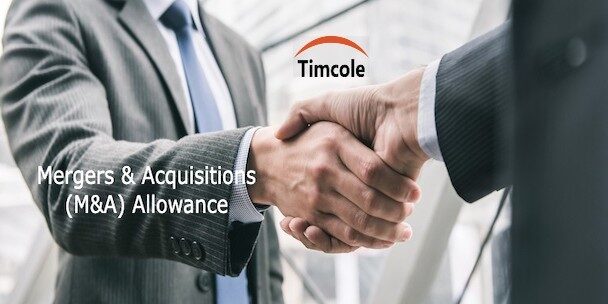Allowing its businesses and industries to be built upon solid foundations is one of Singapore’s main strategies to sustain true economic growth. Offering allowances on mergers and acquisitions to companies registered on the island city is one way it achieves this— and it has been quite successful.
By doing this, businesses can expand internationally smoothly and easily. In addition to those businesses prepared to grow through a merger or acquisition, the Inland Revenue Authority of Singapore hopes that by providing the allowance, other businesses will also be encouraged to expand overseas.
The M&A allowance can be a good source of funding for any company with such ambition, especially for a new business. However, although the steps to obtaining the allowance are straightforward, there are eligibility requirements that must first be met. As a result, this article will thoroughly analyse the Mergers & Acquisitions (M&A) Allowance and those who can qualify for it.
What are Mergers & Acquisitions (M&A)?
Each business has distinctive potential and capabilities that set it apart from other businesses. A business can generate a lot of revenue and profits on its own and therefore meet its yearly financial goals. However, there are still situations where such businesses can be constrained in terms of efficiency, capabilities, and financial strength.
When two businesses combine, a powerful force is created with enormous potential for both the long and short-term futures. The act of two companies coming together to gain synergy and better efficiency comes under the definition of Mergers & Acquisitions (M&A).
One of the business entities takes on the role of the acquiring company, and the other will be the target company; the resulting company, therefore, qualifies for an M&A Allowance. When only a portion of the target company’s shares is purchased, only the acquiring company is eligible for the M&A Allowance.
The goal of the Singapore government in encouraging mergers and acquisitions is to help different businesses merge as one in order that they may strengthen any structural weaknesses they may have had and so position them for future growth.
Simply put, the Mergers and Acquisitions (M&A) Allowance is a tax benefit that an acquiring company receives but which is meant to be shared with its target company. According to Singapore law, any acquisition of another’s assets, liabilities, or other properties between 1 April 2010 and 31 December 2025 qualifies for an M&A allowance. In other words, if Company A purchases Company B’s assets during that predetermined window, then Company A qualifies for the M&A Allowance.
The share acquisition value is subject to the M&A allowance of 25%. Additionally, the maximum allowance is $5 million for each accounting year. This indicates that the allowance limit can be reached with just one acquisition costing S$20 million.
This five-year tax benefit is unaffected by postponements of any kind. However, during these times, the two merging businesses must adhere to the terms and conditions of their agreements.
Mergers & Acquisitions Allowance: The Terms and Conditions Involved
Since M&A involves both the target and acquiring companies, both must meet certain requirements. The Singaporean government controls the Mergers & Acquisitions (M&A) allowance and chooses which companies get to benefit from it.
One important requirement the target company must fulfil is that it cannot merge with an acquiring company if it employs fewer than three local workers. Additionally, the target company must ensure that it is engaged in business activity within 365 days of reaching an agreement with the acquiring company.
The acquiring company also has its fair share of requirements to fulfil. They must be registered and licensed to operate in Singapore, unlike the target company, which is not mandated to be licensed locally. Only when a business entity is a tax resident of the country can an agreement with the target company be practical; cooperative organisations are also included. Furthermore, the acquiring company must refrain from involvement with the target company for at least two years; otherwise, it would void the agreement.
Just like in the case of the target company, the acquiring company is expected to have at least three contracted employees with a commitment that lasts for 365 days. However, the hiring of staff shouldn’t take place during the time that the merger will take place. Company directors are the only ones who are exempt from this requirement.
In some cases, an intermediary is required to make an acquisition easier. For example, if an M&A tax break is to be given in this case, the acquiring subsidiary must meet the requirements listed below:
- By the time the share acquisition is made, the acquiring company must own the subsidiary directly and wholly.
- The acquired subsidiary must not be engaged in any business or trade activities in Singapore or elsewhere as of the share acquisition date,
Failure to abide by the requirements will result in the nullification of the M&A Allowance agreement.
 Need a professional to evaluate and manage your current company taxation status?
Need a professional to evaluate and manage your current company taxation status?
Timcole provides professional accounting and taxation services catered to and customized to all industries.
Qualifying Conditions for M&A Allowance
The terms “shareholding” and “acquisition” are crucial when discussing the M&A Allowance. Unfortunately, many business owners use the two terms interchangeably, which would represent the facts incorrectly and should never be done. While shareholding communicates a mutual understanding and the purchase of a portion of the target company’s shares, acquisition involves a total and complete takeover.
There are no specific requirements regarding full acquisitions, but for share acquisitions, a few requirements must be satisfied for an allowance to be granted.
Let’s assume that the acquiring company is XYZ Liability Company and that the target company is ABC Limited. Also, XYZ Liability Company can own 50% of the shares of ABC Limited.
If XYZ Liability Company owned less than 20% of the target company’s (ABC Limited) ordinary shares prior to the share acquisition date, it must ultimately acquire at least 20% of the target company’s ordinary shares.
XYZ Liability Company must ultimately acquire at least 50% of the ordinary shares of the target company for an allowance to be granted, even if it already owns more than 20% of ABC Limited Ordinary Shares before the share acquisition date.
Conclusion
As extensively covered above, the Mergers & Acquisitions (M&A) Allowance is a tax benefit that an acquiring company can take advantage of when buying shares of a target company. The government of Singapore established it to support the expansion of companies seeking to merge to reduce costs for their upcoming tax returns.
About Timcole
Contact us to find out more about how we can help you with your company today.








